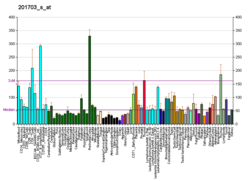| PPP1R10 | |||||||||||||||||||||||||||||||||||||||||||||||||||
|---|---|---|---|---|---|---|---|---|---|---|---|---|---|---|---|---|---|---|---|---|---|---|---|---|---|---|---|---|---|---|---|---|---|---|---|---|---|---|---|---|---|---|---|---|---|---|---|---|---|---|---|
| Identifiers | |||||||||||||||||||||||||||||||||||||||||||||||||||
| Aliases | PPP1R10 , CAT53, FB19, PNUTS, PP1R10, R111, p99, protein phosphatase 1 regulatory subunit 10 | ||||||||||||||||||||||||||||||||||||||||||||||||||
| External IDs | OMIM: 603771; MGI: 1289273; HomoloGene: 2033; GeneCards: PPP1R10; OMA:PPP1R10 - orthologs | ||||||||||||||||||||||||||||||||||||||||||||||||||
| |||||||||||||||||||||||||||||||||||||||||||||||||||
| |||||||||||||||||||||||||||||||||||||||||||||||||||
| |||||||||||||||||||||||||||||||||||||||||||||||||||
| |||||||||||||||||||||||||||||||||||||||||||||||||||
| |||||||||||||||||||||||||||||||||||||||||||||||||||
| Wikidata | |||||||||||||||||||||||||||||||||||||||||||||||||||
| |||||||||||||||||||||||||||||||||||||||||||||||||||
Serine/threonine-protein phosphatase 1 regulatory subunit 10 is an enzyme that in humans is encoded by the PPP1R10 gene. This gene lies within the major histocompatibility complex class I region on chromosome 6. [5] [6] [7]





